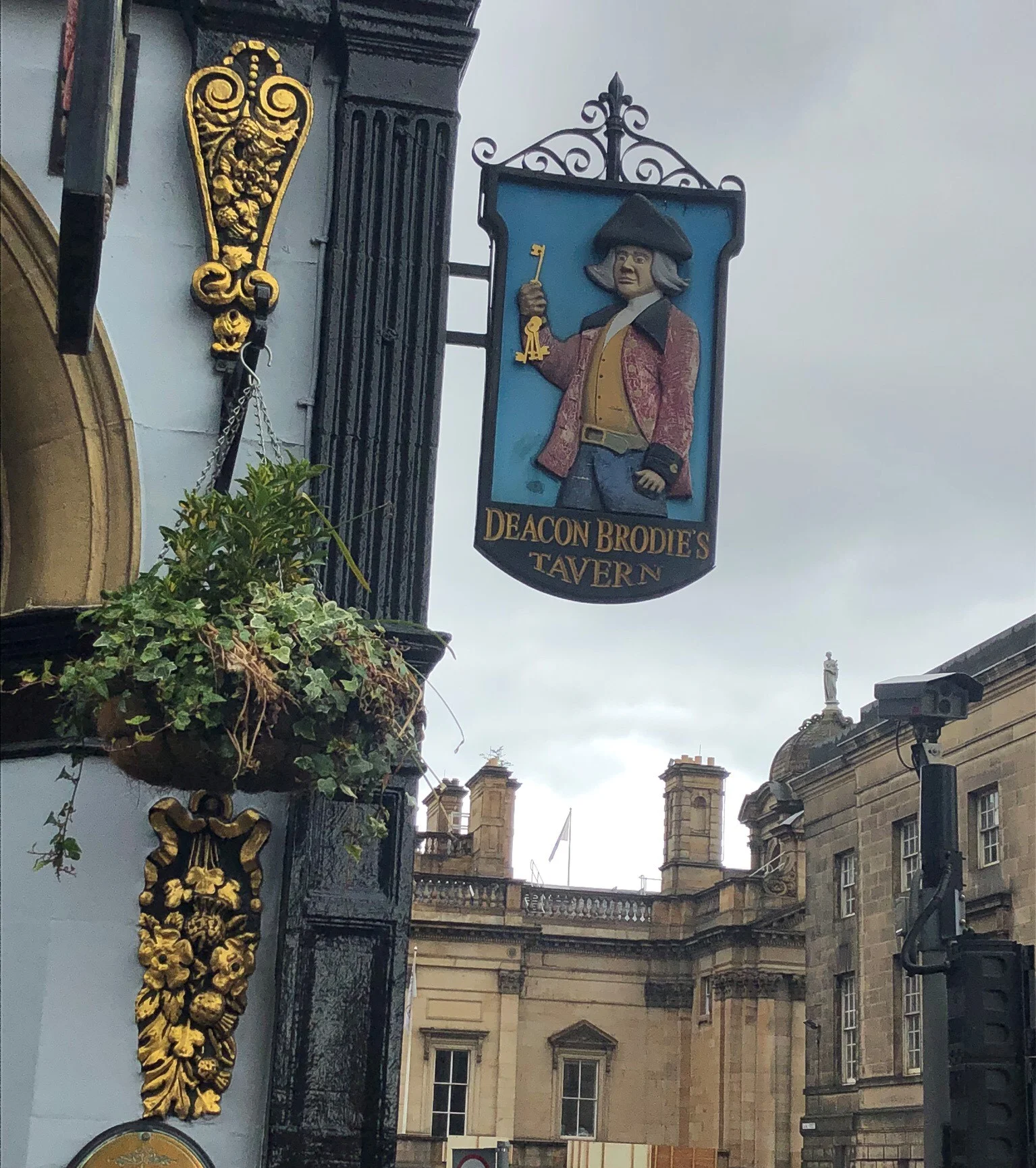Last month we spent a delightful vacation touring Scotland. I heard lots of great stories there, and I’d like to share the story of Deacon Brodie. I wrote this based on facts we learned from our local guides in Edinburgh. By the way, the Stevenson clan went with us. This was my second trip to Scotland, and both times I took a copy of Chinaberry Summer with me!
Deacon Brodie
Deacon Brodie was a good man. Or was he?
By day, William Brodie was a cabinetmaker, a deacon in a trade guild, and a city councilor in Edinburgh in the 1700s, but by night, he led a different life. He was a gambler with heavy debts.
A respected man, Deacon Brodie courted wealthy customers who appreciated his fine cabinetry work. At night, he gambled and ran up debts he could not pay. There was only one way out of his dire situation, or so he thought: He must go to his dark side.
On the job, he was invited to enter the homes of prosperous Edinburgh folk. A cabinetmaker, yes, but also a locksmith. Unbeknownst to his customers, in his hand he held wax pressed against his palm. He pilfered their house key, pressed its imprint into the wax, and stealthily replaced their key. In due time, he silently entered his victims’ homes by way of his new duplicate key and robbed the unsuspecting victims. Later they would notice items missing and realize they had been robbed, but how could it happen with no sign of forced entry? It was a mystery.
Deacon Brodie soon fell deep into his new secret life. By day, he was an admired craftsman and father. By night, he was a housebreaker and a thief who used his ill-gotten gains to continue his gambling and pay his debts. Soon his night life became thrilling and prosperous. He formed a small gang with three other men.
Authorities were left scratching their heads, while victims were crying out for justice. At last, the police offered a reward for whoever could identify the night burglar and bring him to justice. One of Brodie’s own men turned him in for the reward. Brodie was sentenced to hang.
Now not every ne’er-do-well died the same way on the gallows. Some were “lucky” and fell through the gallows floor, the noose snapping their necks in the drop, resulting in instant death. Others did not fare so well. They danced on the end of the rope for as long as forty-five minutes, slowly suffocating.
Deacon Brodie was in denial. He didn’t believe he would die on the gallows. He thought for sure he would be the second kind of criminal. He would swing for a minute, long enough to appear dead, but for a short enough amount of time to be surreptitiously rescued by one of his men. One legend even says he wore a metal collar around his neck to protect himself from the noose. But Deacon Brodie died anyway, and he wasn’t one of the ones who lingered. As he dropped through the gallows floor, his neck was snapped, and thus ended his mysterious double life in 1788, only a few feet from where the Deacon Brodie Tavern stands today on a busy corner of the Royal Mile in Old Town Edinburgh not far from the castle.
Down through the years, in fact, down through the next century, the story of Deacon Brodie was told by storytellers far and wide in Scotland. His story was told to young people gathered with their family around their fireplaces. They heard the story of how someone who appeared to be honest and upright during the day could lead a dangerous, evil life of an obsessive gambler, a housebreaker, and a ruthless thief at night.
One young man who grew up hearing the story of Deacon Brodie was inspired to write a book in 1886. The book was entitled The Strange Case of Dr. Jekyll and Mister Hyde. Of course, that author was Robert Louis Stevenson.
Deacon Brodie’s Tavern in Edinburgh, Scotland Photo by Carroll S. Taylor 2019

